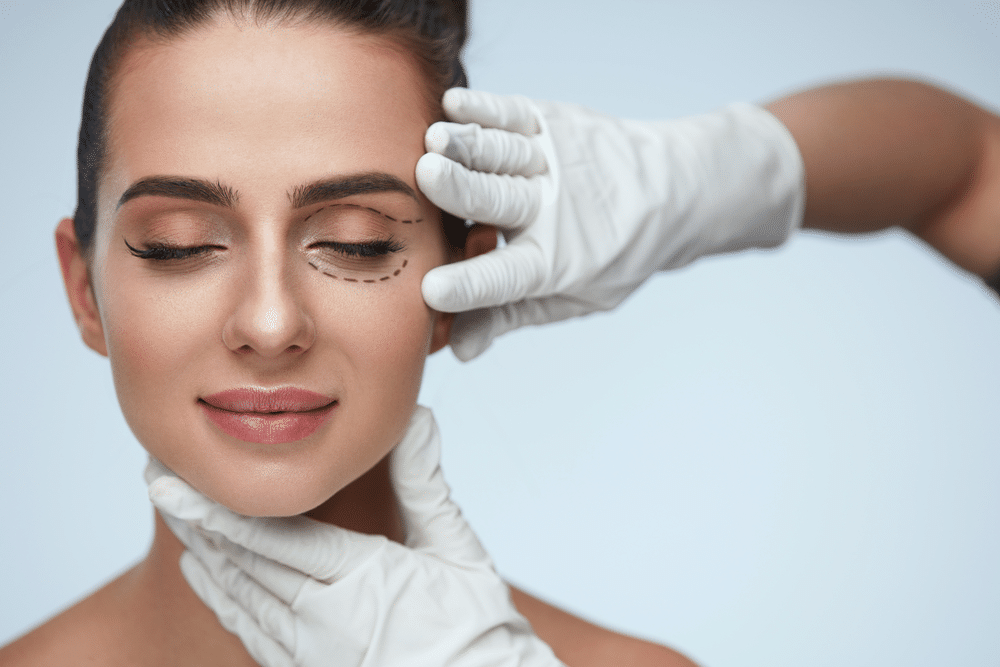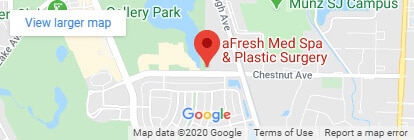Many people believe that eyes are the window to the soul and that playing up your eyes is another way to play up your beauty. But it can be difficult to feel beautiful and confident with your appearance when you are contending with heavy or drooping eyelids. Not only are droopy eyelids an aesthetic concern, but they can also cause potential vision impairment. Luckily, Dr. Gutowski in Chicago, IL knows that eyelid surgery can be the solution you’re looking for to enjoy a more pleasing aesthetic.
How Do I Know When I Need Eyelid Surgery?
When is the right time to have eyelid surgery? Honestly, it depends on your exact situation. For example, you may want to have this surgical procedure if you feel drooping eyelids make you appear older than you are, or you may want to seek this treatment if your vision is impaired. There is no “right” age to have this treatment, so it’s really up to you and your needs.
Blepharoplasty is an outpatient surgery that involves the removal of excess skin, tissue, and fat from the upper or lower eyelid. This surgery essentially removes weight that causes the eyelids to droop, which can help you look younger and make it easier for you to see. But there are other reasons why you may want to consider this treatment.
Top Reasons to Consider Eyelid Surgery
1. You Have Heavy Upper Lids
Iconic stars like Bette Davis were famous for “bedroom eyes” caused by heavy upper lids. A heavy upper lid can create a sultry, mature aesthetic that can usually only be accomplished with cosmetics.
That said, there comes a point where a naturally heavy upper eyelid can cause problems. For example, the muscles around the eye and eyebrow can be strained by heavy upper lids, which create excess weight on the eye. The muscles on this area of the face have to compensate more to hold the eyes open and that can sometimes cause pain and headaches.
2. Your Vision Is Impaired
It’s not an exaggeration to say that heavy upper eyelids can also potentially cause vision impairment. Eyelids that droop in the front of the eye can block frontal vision because of how much of the eyelid is covering the pupil, and that may make it difficult to perform basic tasks like reading.
Eyelid drooping on the outer corners of the eye can also impair vision, specifically your peripheral vision. Your peripheral vision is scientifically proven to be important for both your visual perception and your reflexes. There are studies that suggest peripheral vision is more accurate than frontal vision, so it’s clear that good peripheral vision is necessary for daily functioning.
3. You Look Tired
Whether your upper or lower eyelids are drooping, it’s usually true that heavy eyelids can make you appear more tired than you are, which can also make you appear older than you are. In fact, tired-looking eyes can weigh down your entire appearance, prematurely age you, and even make you appear less alert.
4. You Have Loose or Excess Skin
Another way heavy eyelids can make you appear older is with loose or excess skin, particularly when there are wrinkles around your eyes. Excess skin around the eyes can cause crow’s feet or obvious hollow areas like tear-troughs that can add years to your appearance. The skin in the eye area is especially delicate compared to other areas of the face. Loose or excess skin around the eyes is one of the primary reasons for seeking blepharoplasty.
5. You Have Trouble Apply Cosmetics
Eye cosmetics are one of the most common ways to emphasize your beauty, but it can be difficult to apply cosmetics properly when excess skin causes uneven lines or pigment distribution. All eye cosmetics are easier to apply when the eyelid is taut and smooth. Even products like anti-aging eye creams and serums can also be applied more evenly and produce better results when the skin around the eyes is smooth.
Eyelid Surgery FAQs
1. Does Insurance Pay for This Procedure?
This is a tricky question. Your insurance may pay for this procedure depending on your specific insurance plan and the purposes of your treatment, such as whether this surgery is for cosmetic or medical purposes. Generally speaking, most health insurance does not pay for cosmetic procedures, so if you do not have a diagnosis that indicates heavy eyelids are interfering with your vision, then your surgery will likely be considered elective. You will have to pay for elective surgeries out-of-pocket.
2. Is There a “Best” Age for This Surgery?
No, there is no “best” age to have this surgery. Drooping eyelids can occur at any age. In fact, many people may have a genetic predisposition that causes the collagen in the skin around the eyes to break down more quickly and cause drooping eyelids earlier in life. That said, most surgeons will suggest waiting to have this surgery until the drooping of the eyelid is at least moderate before having corrective surgery.
This may mean you will need to wait until you are between the ages of 30 and 40 before having this surgery. Waiting until your eyelid concerns are more pronounced will help your surgery be more successful and last longer.
3. What Should You Expect From This Surgery?
Blepharoplasty involves making small incisions around the natural folds of the eyelid. Through the incision, any excess tissues, fat, and skin will be removed until your desired results are achieved. The incision will be closed in a way to minimize scarring – and the majority of patients will not develop scars as a result of this surgery.
Most of the time, this surgery takes about one hour to complete for both eyes, or less if there is less correction that must be accomplished. Since this is an outpatient surgery, you will be able to go home immediately after your appointment. There is also no general anesthesia used for blepharoplasty, although mild sedatives and local anesthesia are common. You will need someone to drive you home after your surgery.
4. What Is Recovery Like?
You will be given several aftercare instructions after your surgery that will detail how you should wash and care for your eyes, how to use cold compresses, and how you should sleep. It’s best to avoid strenuous activities or activities that will strain your eyesight. You will also likely be given prescriptions after your surgery.
Most patients are recovered about 10 to 14 days after their surgery, although you may require several more weeks until you are fully healed. You may need to attend follow-up appointments after your surgery to verify how well you are healing.
5. How Long Will Your Results Last?
In general, most patients can expect the results of this surgery to last for about 10 or more years. The results of this surgery last so long because the removal of excess skin will prevent further sagging around the eyes and take the stress off of the muscles around the eyes to slow the aging process.
Can You Prolong Results?
Although 10 years or more is an exceptional time for results to last, many patients still want to ensure that their results last for as long as possible. There are many things you can do to prolong the results of your surgery. For instance, using eyewear with UV sun protection will protect the skin around your eyes from UV rays that cause premature aging and collagen depletion.
You can also use anti-aging skin care products around the eyes to help slow the aging process. It’s also important that you do gently cleanse the eye area to avoid irritation, stretching, or pulling the skin around the eyes.
6. Is There Ever a Medical Need for This Surgery?
Yes, there are many patients who seek this treatment for medical purposes. Although this may seem like a purely cosmetic surgery, many patients who have impaired vision caused by eyelid drooping may be qualified for medically-necessary blepharoplasty.
To qualify for a medically-necessary surgery, you will need to contend a consultation with an eye doctor and an eye surgeon to confirm drooping eyelids are interfering with your ability to see properly. These consultations will be verified by eye exams and other tests.
7. Can You Use This Surgery to Change the Shape of Your Eye?
Yes, you can use this surgery to change or augment the shape of your eye to achieve a specific aesthetic goal. Both your appearance goals and the skill of your surgeon can make it possible to alter the natural shape of your eye while heavy upper or lower lids are corrected. If your goal for this surgery is to change the shape of your eyes in addition to correcting heavy eyelids, please let Dr. Gutowski know during your consultation.
8. Is This a Common Surgery?
Blepharoplasty is one of the most common types of plastic surgeries within the past several years for the eye area of the face. This surgery is common for both medical and cosmetic purposes. Although not used to correct drooping eyebrows, this treatment can be used to create a softer and smoother appearance of the upper face. Many plastic surgeons agree that this is a routine outpatient surgery.
9. Why Should You Use This Surgery on the Lower Eyelid?
This treatment is commonly performed on the lower eyelid, as well. Many patients who have constant dark circles beneath the eyes, excess skin on the lower eyelids, or drooping lower lids seek this surgery. It’s common for lower eyelid surgery to also correct under-eye hollowness to reduce volume loss beneath the eyes and reduce the appearance of sagging. Because dark circles and under-eye hollowness can make you appear older than you are, this surgery can reverse these signs of aging.
10. Can You Combine This Surgery With Other Treatments?
Yes, this surgery is commonly combined with other treatments, such as injectable treatments. For example, Botox is commonly used to smooth the appearance of wrinkles on the forehead and around the brows. Dermal fillers can also be used to increase under-eye volume to enhance the results of your surgery.
11. Who Are Good Candidates?
Any adult who has drooping eyelids is usually a good candidate for this surgery. Patients should not have any other eye conditions, except for common vision impairment. Dr. Gutowski will be able to determine your eligibility for this surgery during your consultation.
Look Younger With Eyelid Surgery
If you think your eyes are your best feature, then you should do all you can to let them shine. Blepharoplasty can correct drooping upper and lower eyelids that make you appear older than you are. Please contact Dr. Gutowski in Chicago, IL to schedule your consultation today.










